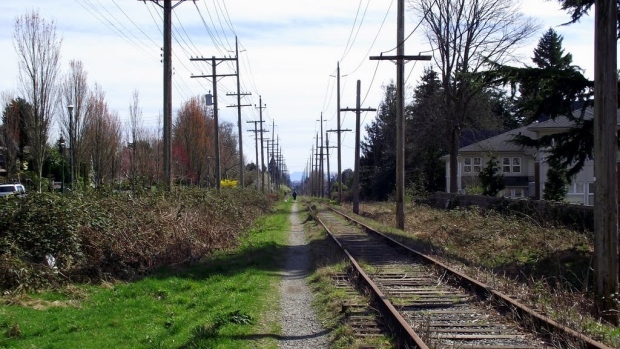 Everyone is so excited about the Arbutus corridor becoming part of the livable green city, with new biking, walking connections potential, a new tramway track and the removal of the old Canadian Pacific Railway ties. Years ago housing facing the Arbutus corridor was discounted because of the uncertainty of the eventual use of the corridor.
Everyone is so excited about the Arbutus corridor becoming part of the livable green city, with new biking, walking connections potential, a new tramway track and the removal of the old Canadian Pacific Railway ties. Years ago housing facing the Arbutus corridor was discounted because of the uncertainty of the eventual use of the corridor.
An article in The Globe and Mail compares the new Arbutus corridor to the High Line in New York City which has become an elevated green oasis, sparked regeneration of buildings in that area, and reaping 100 million dollars in extra property tax in 2010 alone.
City Hall is now in the planning stage for the next steps of this significant corridor but it begs the question-how do we correctly cost the greenway and assess the economic, social, recreational, and amenity value as a significant green spine in the west side of the city? Can we include the health benefits, and start to look at factors that are not necessarily included at as part of the equation? How do we factor in the development potential for parts of the corridor?
As the Globe and Mail article states “ a 2009 study on the economic benefits of public parks makes the distinction between direct income and direct savings for cities. Direct income comes from higher property tax as property values near parks rise, along with greater sales tax from visitors and tourists spending while using the park, noted the report by the Washington, D.C.-based Center for City Park Excellence, part of the advocacy organization The Trust For Public Land. This is in contrast to the direct savings for cities and their residents, such as parks being an alternative to other, more expensive recreation. There are also the obvious health benefits. Parks can help reduce medical costs and create greater community pride, in turn providing the kind of civic cohesion that can lower the cost of urban blight.”
The work on the Comox-Helmecken Greenway provides some guidance with the study done by the UBC Health and Community Design Lab in concert with the Centre for Hip Health and Mobility. Findings on that greenway included a 16 per cent increase in moderate physical activity with the installation.
In the case of the Arbutus Corridor, this might be an excellent piece of consultative work that can be undertaken by an aspiring Phd candidate at the UBC School of Planning. How do we ascertain value from an economic, health and social perspective of this new green link, the Arbutus Corridor? And can we take advantage of some of the great landscape architectural minds in Vancouver to suggest and develop some innovation into this new green lung on the city’s west side?













If I recall correctly, part of the deal with CP was that in addition to the $55M, they would also be further compensated for any increases in land value resulting from development or upzoning along the corridor. The corridor is a great opportunity for the City, but it’ll be interesting to see how this obligation will constrain options. There seem to be more obvious direct savings than direct income potential.
I believe the agreement with CP on sharing the profits results from the City changing the zoning of the land they purchased from CP and getting a lift from that, not from development on other land along the corridor. If the City doesn’t change the zoning from the current transportation use then there is no lift.
The surplus lands that rezoning would likely apply to are largely north of 6th where the tracks curve.
Did you just throw the tramway track in there, Sandy, as I believe there is no such plan whatsover ?
Walkability and parks make sense obviously in dense cities. Hard to find a real $ figure that a new park is worth X $s per sq m ? Highline park is a real gem but a tad dense / busy for my taste already.
Worthy a PhD thesis though to quantify those questions you pose !
The City has reported that they are planning a tram line. They will need funding from Translink, but that is another issue.
Author
Reblogged this on Sandy James Planner.